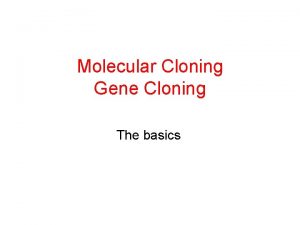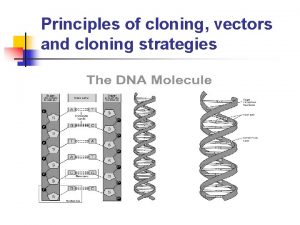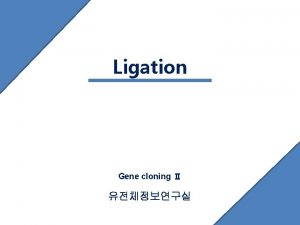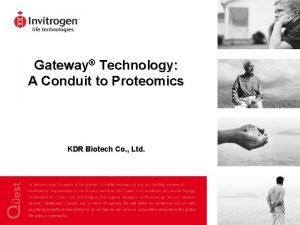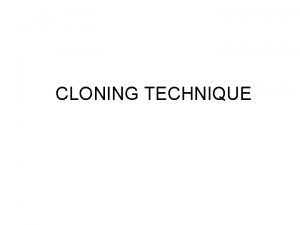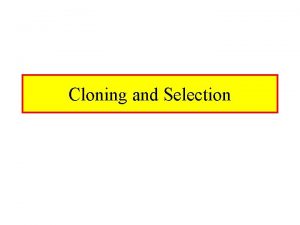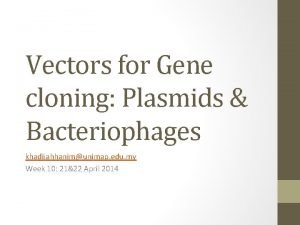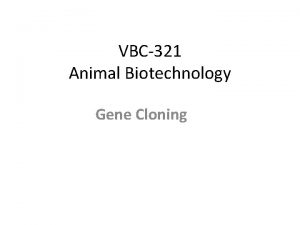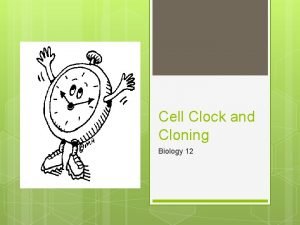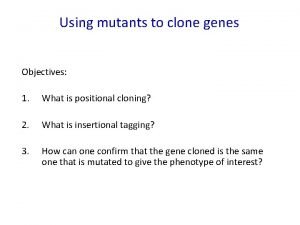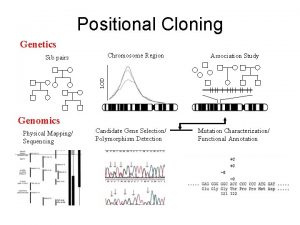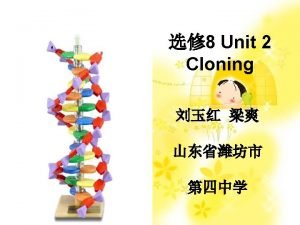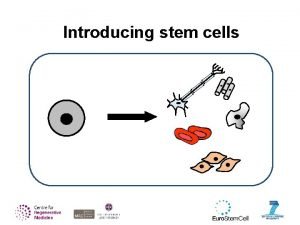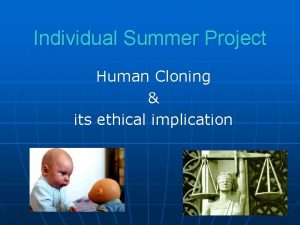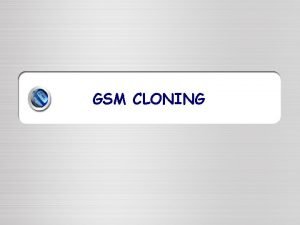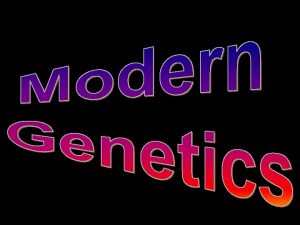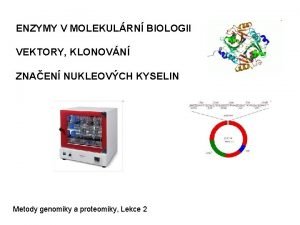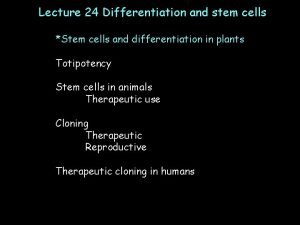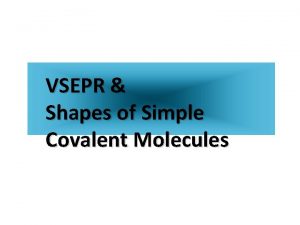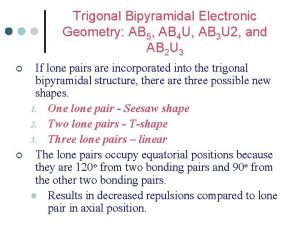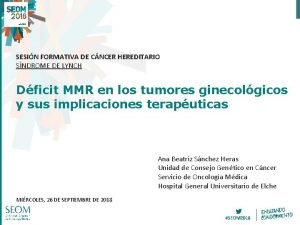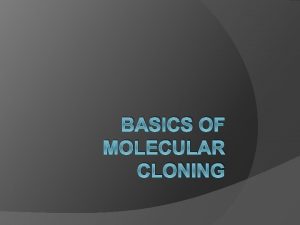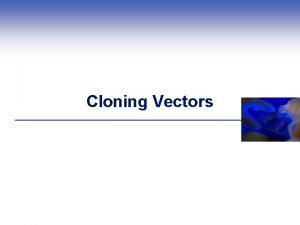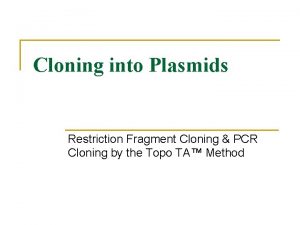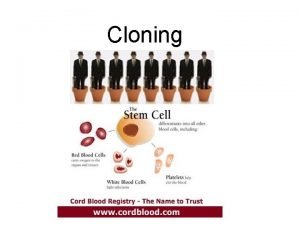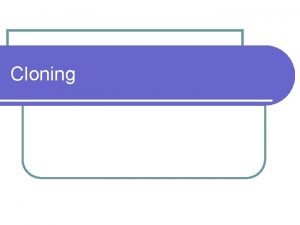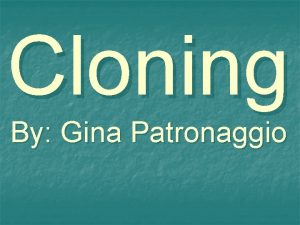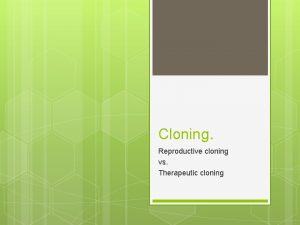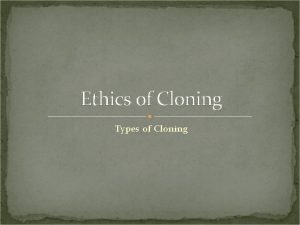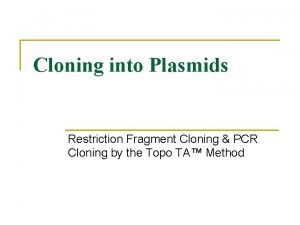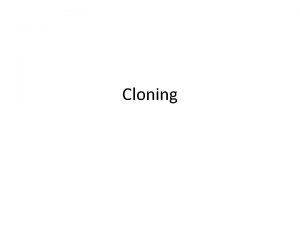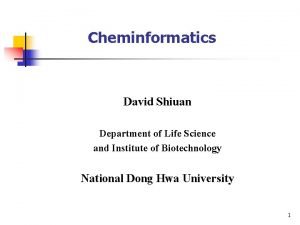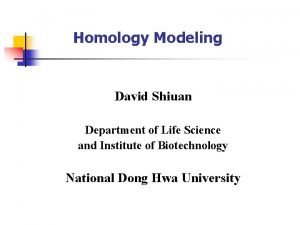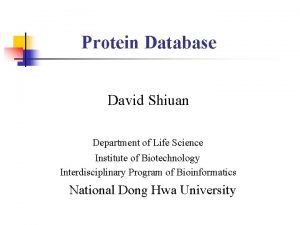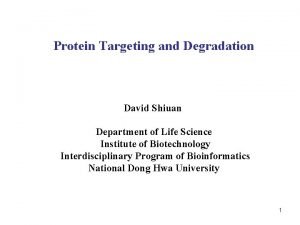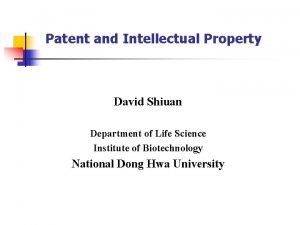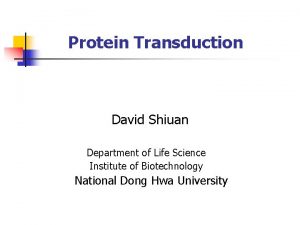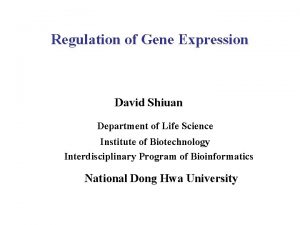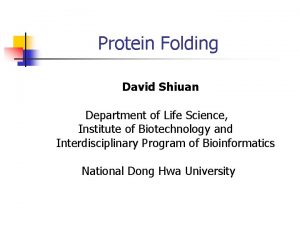Application in Molecular Cloning David Shiuan Department of










































- Slides: 42

Application in Molecular Cloning David Shiuan Department of Life Science, Institute of Biotechnology and Interdisciplinary Program of Bioinformatics National Dong Hwa University

Molecular Cloning In order to have enough DNA to work with for a single gene or sequence, you must have a way to “clone”, or reproduce many exact copies of that gene. This is called “molecular cloning” Gene of interest

Plasmid Cloning Vector 1. Small 2. Stable in the chosen host – usually E. coli 3. High copy number 4. Easy to purifiy 5. Can accommodate foriegn DNA 6. Single “cloning” sites 7. Selectable marker – antibiotic resistance 8. Easily introduced into host (transformation or transduction










Gene fusion systems – monitor the activity of a gene by fusing it to another Current favorites are the autofluorescent proteins He. La cells expressing gfp and rfp Clontech website

YAC(Yeast artificial chromsome) self-replicating vector that can be maintained in yeast Can accommodate large insert Reeves et al. , 1992, Methods Enzymol. 216: 584 -603

BAC (bacterial artificial chromsomes) Derived from the F plasmid of E. coli low copy number (1 -2 copies per cell) Shizuya et al, 1992, PNAS 89: 9794 -8797

Informatics for Molecular Cloning n n Restriction Enzyme Site Analysis PCR Cloning –primer design Codon Usage Analysis Plasmid Construct – plasmid drawing















PCR primer selection n n n Primer Length Melting Temperature (Tm) Specificity Complementary Primer Sequences G/C content and Polypyrimidine (T, C) or polypurine (A, G) stretches 3’-end Sequence


Primer 3



Codon Usage – differ from organisms






 Steps of gene cloning
Steps of gene cloning Covalent bond melting point
Covalent bond melting point Giant molecular structure vs simple molecular structure
Giant molecular structure vs simple molecular structure Zinc oxide + nitric acid → zinc nitrate + water
Zinc oxide + nitric acid → zinc nitrate + water Cloning pros and cons
Cloning pros and cons 5' overhang
5' overhang Gene cloning
Gene cloning Gateway technology with clonase ii
Gateway technology with clonase ii Reproductive cloning process
Reproductive cloning process Suspension cloning
Suspension cloning Function of plasmid
Function of plasmid Plasmid
Plasmid Identity cloning and concealment
Identity cloning and concealment Cloning in nature
Cloning in nature Cloning and sequencing explorer series
Cloning and sequencing explorer series Cloning tasmanian tiger
Cloning tasmanian tiger Map based cloning
Map based cloning Clock gate cloning
Clock gate cloning Positional cloning
Positional cloning Pixpsd
Pixpsd Advantages of cloning
Advantages of cloning Cloning dangers
Cloning dangers Cloning vectors
Cloning vectors Advantages of cloning
Advantages of cloning Reproductive cloning
Reproductive cloning Clonaid
Clonaid Gsm cloning
Gsm cloning Process of cloning
Process of cloning What is cloning
What is cloning Nick translation
Nick translation Therpeutic cloning
Therpeutic cloning Axe4 molecular shape
Axe4 molecular shape Vsepr theory shapes of molecules
Vsepr theory shapes of molecules Pf3 number of vsepr electron groups
Pf3 number of vsepr electron groups Crash course molecular biology
Crash course molecular biology Molecular level vs cellular level
Molecular level vs cellular level Bathochromic shift and hypsochromic shift
Bathochromic shift and hypsochromic shift Ab6 molecular geometry
Ab6 molecular geometry Ideal gas law examples
Ideal gas law examples Properties of network covalent solids
Properties of network covalent solids Kinetic molecular theory of solids
Kinetic molecular theory of solids Trisilicon octaiodide chemical formula
Trisilicon octaiodide chemical formula Criterios de amsterdam cancer de colon
Criterios de amsterdam cancer de colon
